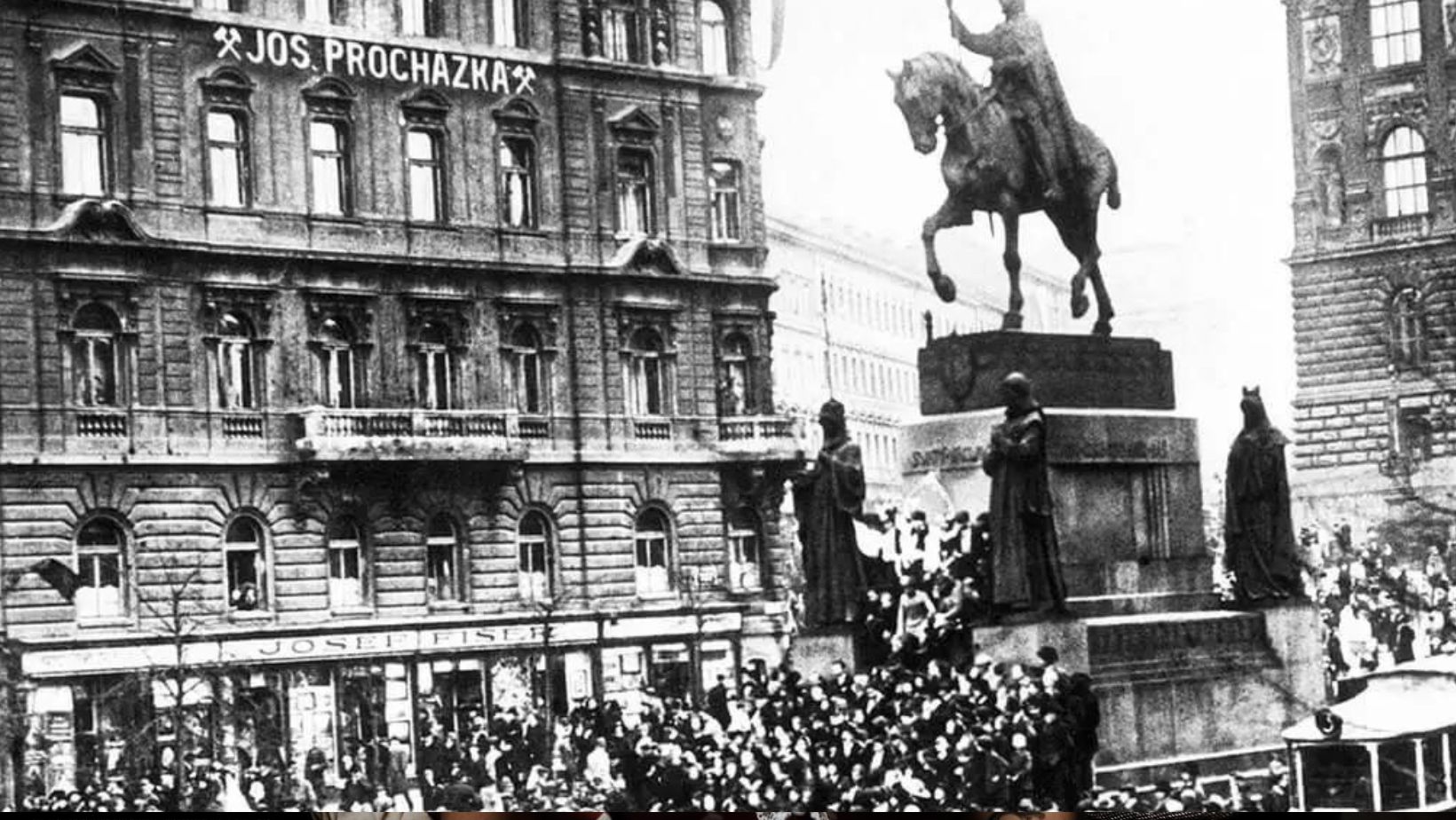On October 28, 1918, the independence of Czechoslovakia was proclaimed by the Czechoslovak National Council in Prague, following the collapse of the Austro-Hungarian Empire during the First World War.
The birth of Czechoslovakia
Throughout the 19th century, the rise of nationalist movements, mounting ethnic tensions and repressive religious and ethnic policies, such as the forced Magyarization of Slovaks, pushed the cohesion of the multi-national Austro-Hungarian Empire to its breaking point.
Despite cultural differences, the Slovaks shared similar aspirations with the Czechs for independence from the Habsburg state, and by the start of the 20th century, the idea of a “Czecho-Slovak” entity, advocated by Czech and Slovak intellectuals began to emerge.
During the First World War, Tomáš Masaryk, Edvard Beneš and Slovak astronomer Milan Rastislav Štefánik founded the Czechoslovak National Council who worked to secure Allied recognition. During that time, more than 90,000 Czech and Slovak volunteers formed the Czechoslovak Legions in Russia, France and Italy, where they fought against the Central Powers.
Following the Pittsburgh Agreement of May 1918, which prescribed the intent to create an independent Czechoslovakia, the Czechoslovak declaration of independence was signed by Masaryk, Štefánik and Beneš on October 18, 1918 in Paris.
The independence of Czechoslovakia was officially proclaimed ten days later in Prague in the Smetana Hall of the Municipal House.
A temporary constitution was adopted, and in November 1918, Masaryk was declared president of the First Czechoslovak Republic.
Several ethnic groups and territories with different historical, political, and economic traditions were blended into the new state structure when the full boundaries of the country, encompassing Bohemia, Moravia, Slovakia and a small part of Silesia, were finally established in the Czechoslovak Constitution of 1920. Carpathian Ruthenia was later added by the Treaty of Trianon in June 1920.
Consisting mostly of territories inhabited by Czechs and Slovaks, the new state also included areas containing majority populations of other nationalities, particularly Germans (22.95%), but also Hungarians (5.47%) and Ruthenians (3.39%).
-
NEWSLETTER
Subscribe for our daily news




